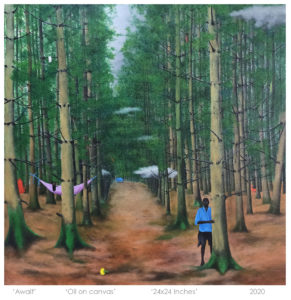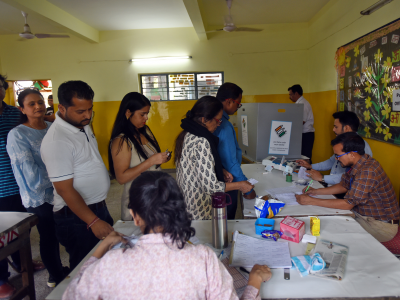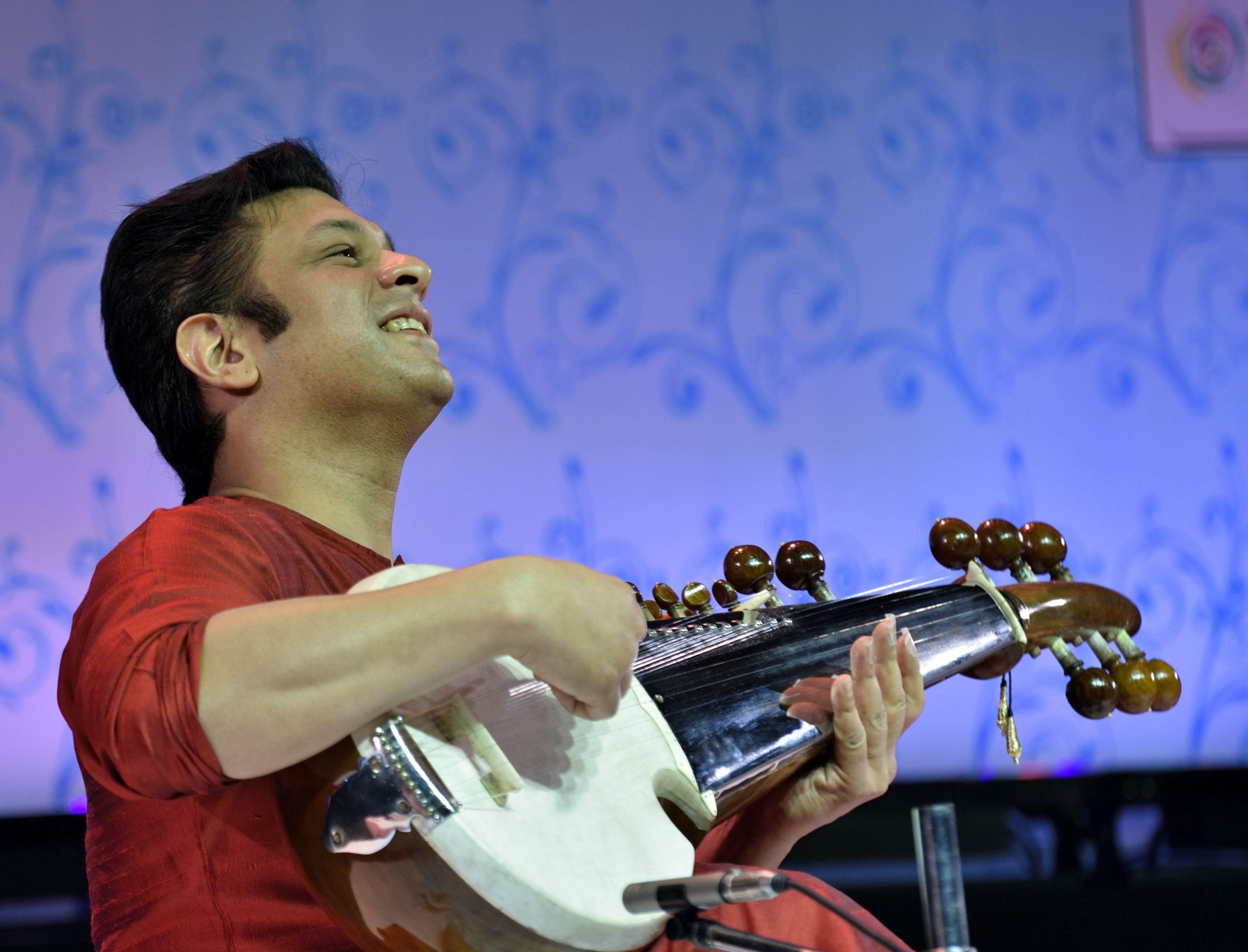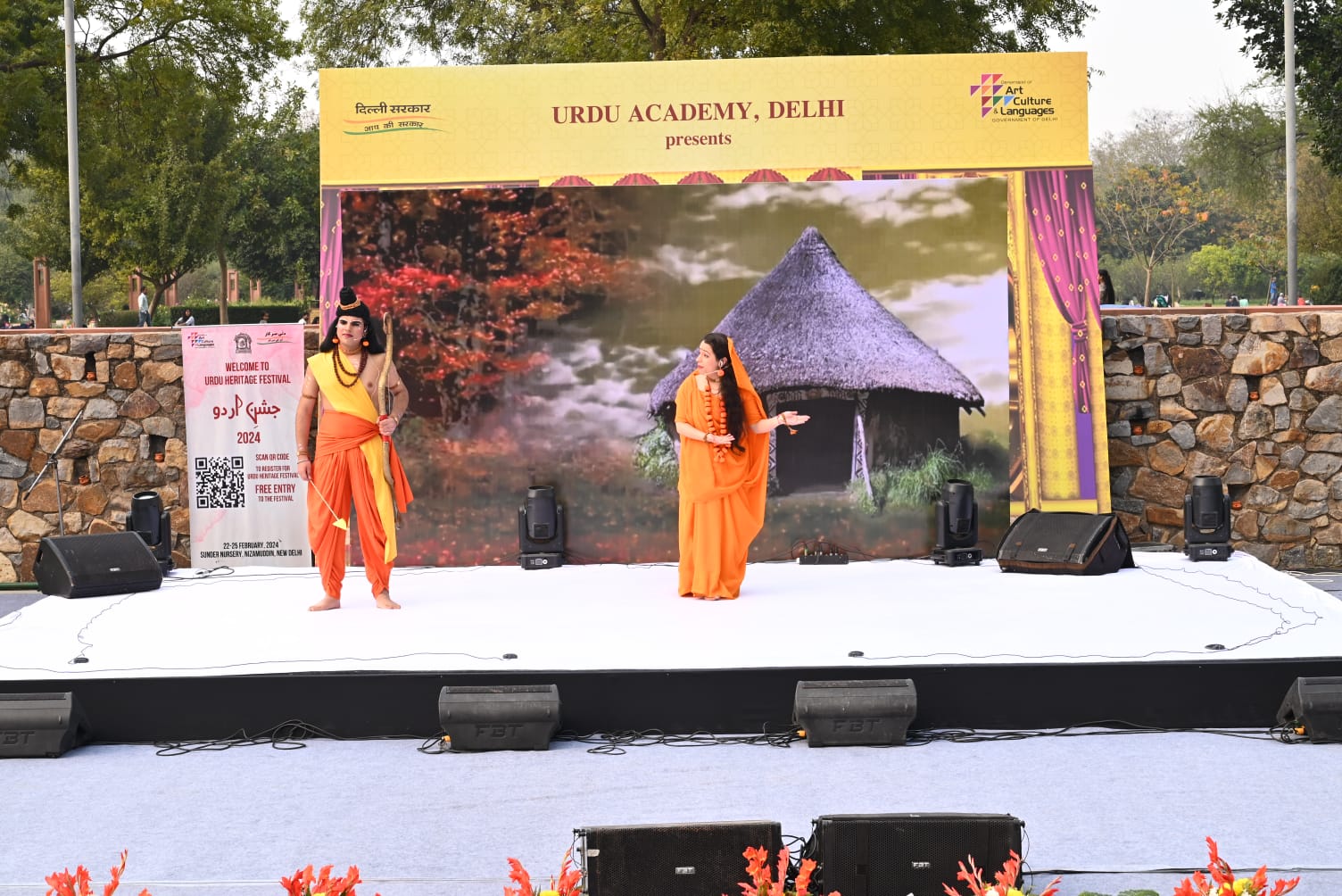The season of rains is here and with an exhibition depicting the raga Malhar with colours on a canvas, a beautiful amalgamation of the classical with the contemporary
Within the realm of Indian mythology and legend, Malhar is one of the most ancient ragas in Hindustani classical music that, when sung, is believed to induce torrential rainfall. Keeping this in mind, an ongoing virtual exhibition titled, ‘Malhar: A lyrical exposition’, presents works of art aptly coinciding with the monsoon.
Presented by Anant Art, and curated by Chhavi Jain, the show features 10 artists from across India and is a culmination of dialogues between artists and their artworks. At the backdrop of this is a shared, yet unique experience of the pandemic that has impacted realities and intensified complexities around us.

The group show features the works of artists Abhijit Saikia, Digbijayee Khatua, Indrapramit Roy, Khandakar Ohida, Laxmipriya Panigrahi, Malavika Rajnarayan and Tanaya Sharma, to name a few.
Malhar, a raga of the night time, is usually depicted in its intense form and visualised in hues of blue and deep purple. The raga has over ten variants, the more prominent ones being Megh Malhar and Mian ki Malhar.
“A journey into Malhar attempts to interlace the classical with contemporary visual forms. The curation seeks to bring to light the artists’ interpretation of ‘Mann ka Malhar’, or the Malhar within, a state of being (of mind and emotions), with a range of internal or external scapes to experiment with,” says Jain.
Despite its association with rain or monsoon, the depiction of this raga, in forms of musical compositions and other forms of representation, has been variable — from an uncontrollable storm to a sense of longing, wonderment and tranquillity.
Tanaya Sharma’s ‘Garden of Bloom’ uses the symbol of floating crowns to suggest alleviation of oppressive, hierarchical systems as a method of the cleansing brought about by rains. Abhijit Saikia conceives an image of displacement and longing, inspired by his surrounding realities, as though struck by an unpredictable storm.
Rajib Chowdhury creates magic with his perception of monsoon and adorns his work with Agha Shahid Ali Khan’s poetry. Artist and professor Indrapramit Roy chose to delve into the unpredictable nature of life as well as the anxieties of urban life, especially during monsoon.
Not only paintings, Khandakar Ohida’s audio/visual work, ‘Rain is Falling’, was conceived in the rustic fringes of Kelepada, a village in West Bengal, India. Impacted by the global pandemic, Ohida, while on a visit to her family in the village, is reminded of simpler times of her childhood days in her home. A lullaby, symbolic of motherhood, subtly encapsulates the work in its wake. Through a heavy, dark sky, a metaphor to a heavy heart, Ohida relocates the horizon of ‘Mann ka Malhar’ with nostalgia in an attempt to reconnect with her roots and emotional depths.
The exhibition is on display at Anant Art’s official website till 20 August
(Cover: Tanaya Sharma’s work titled ‘Garden of Bloom)





